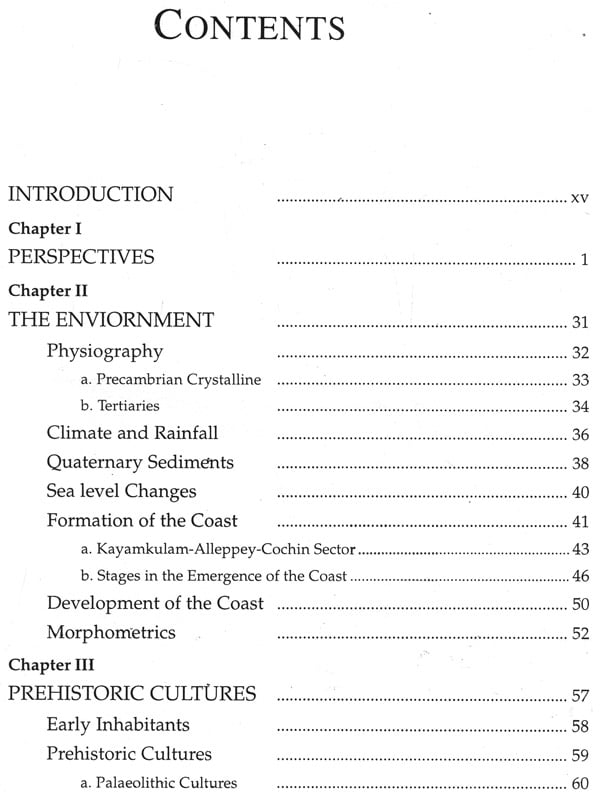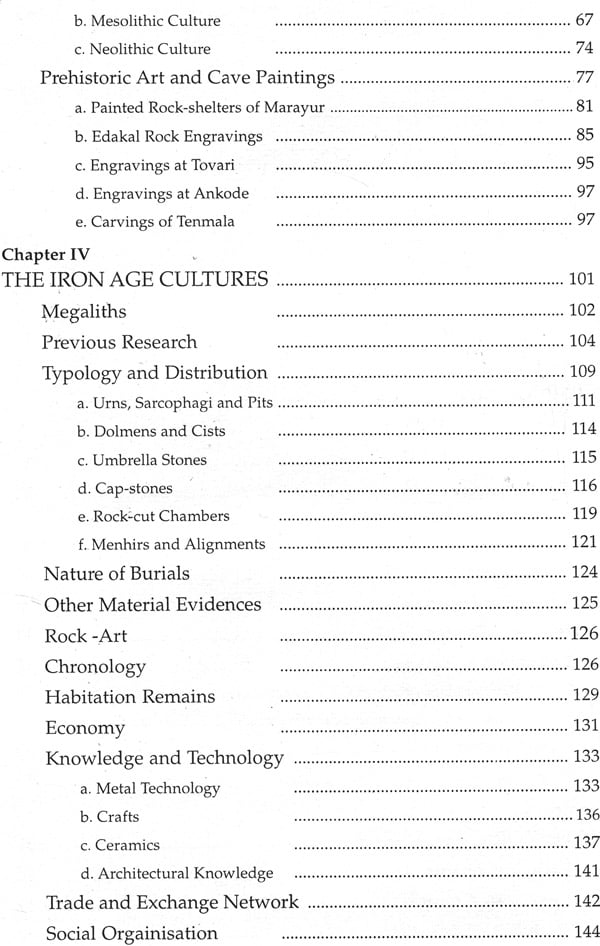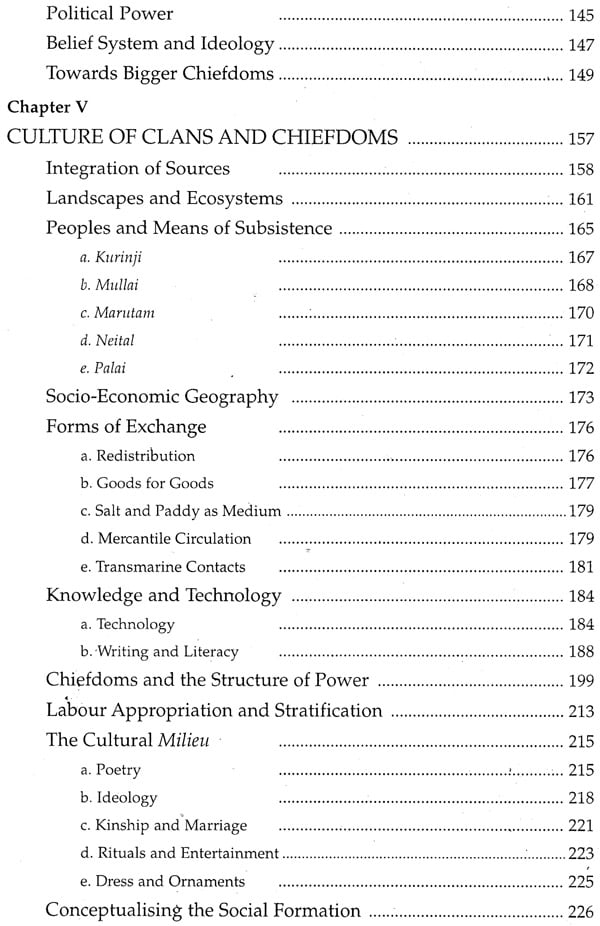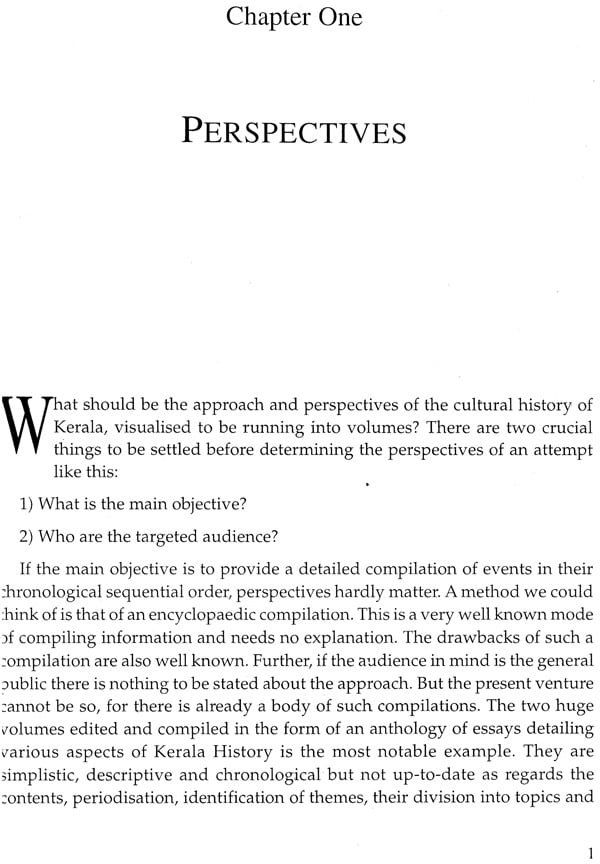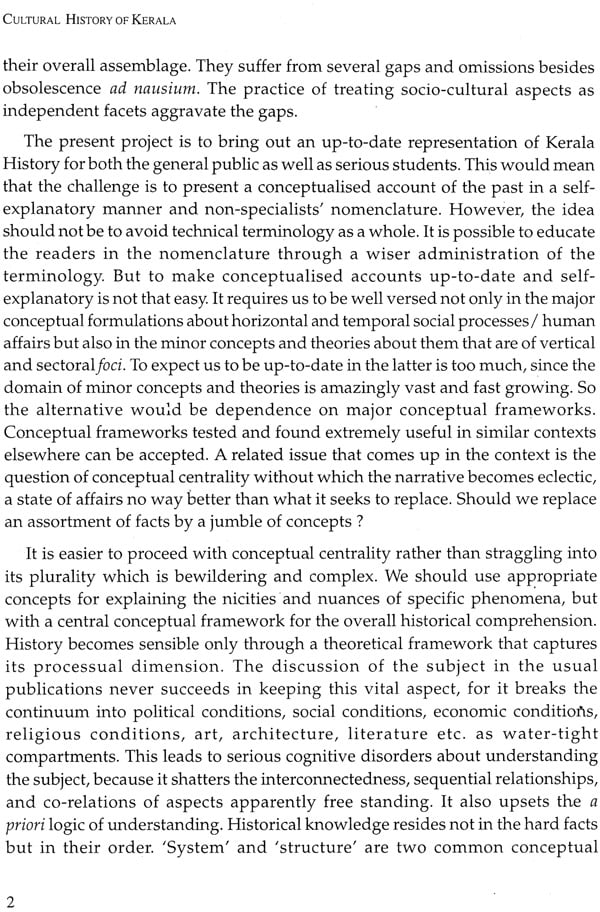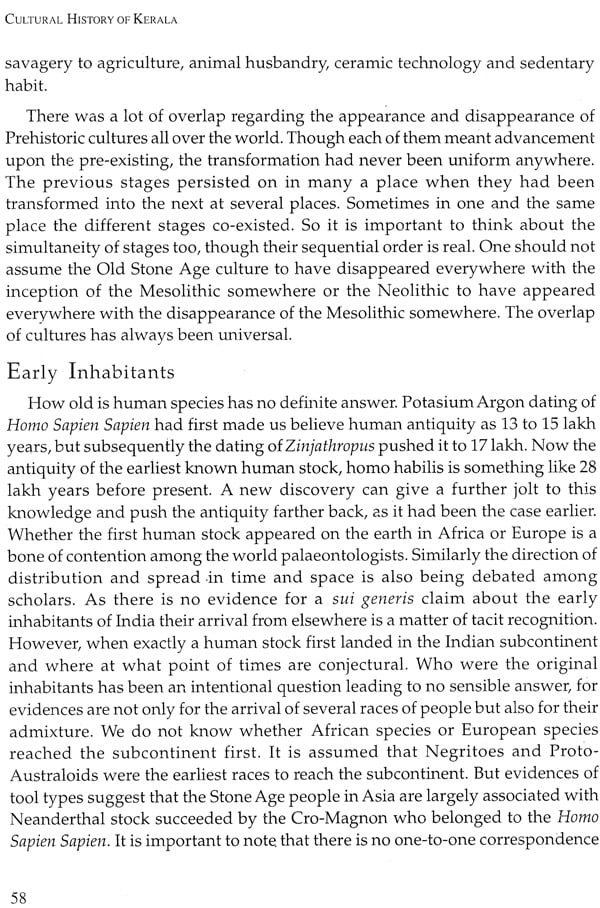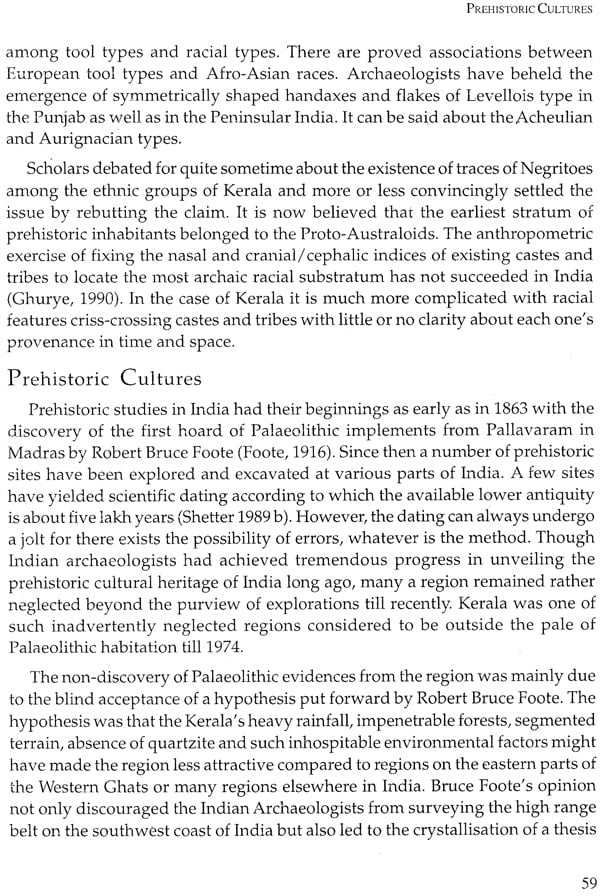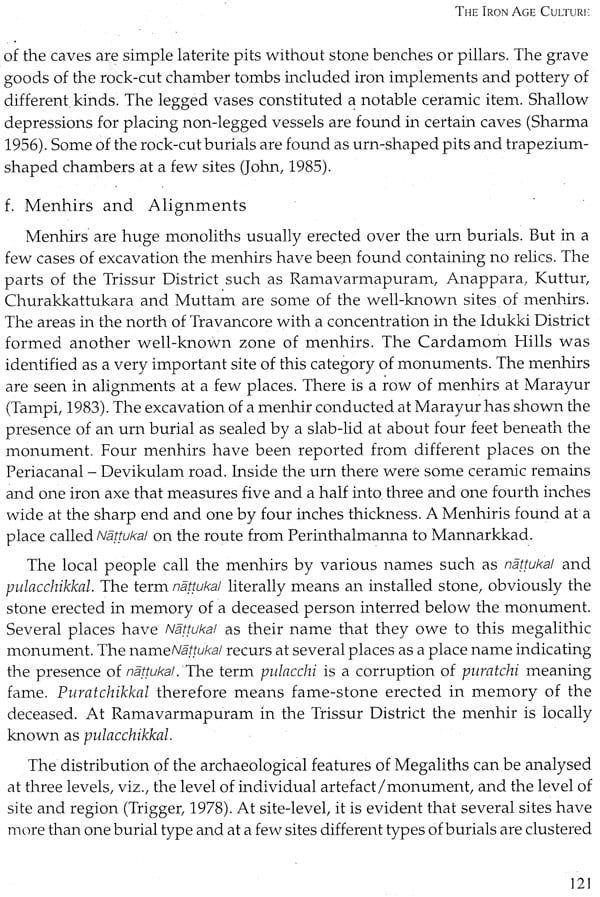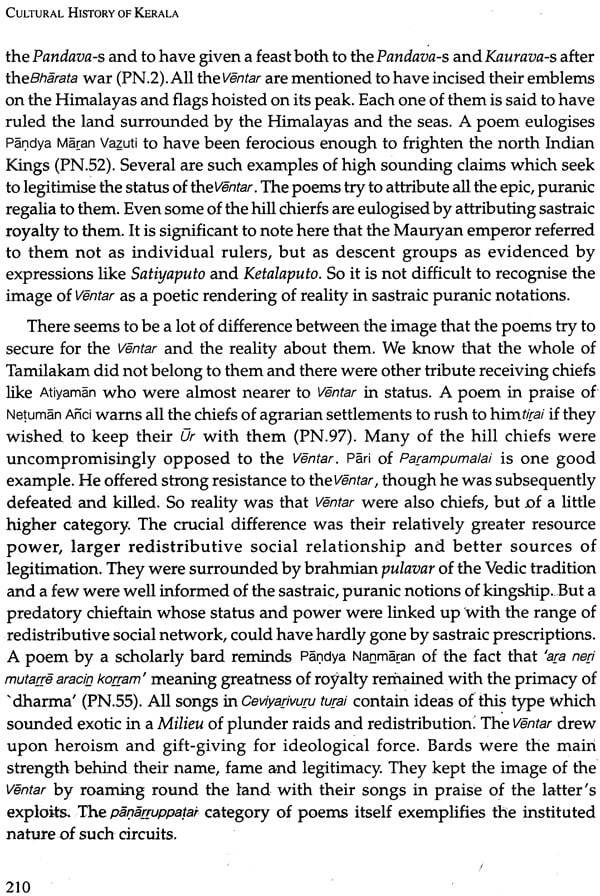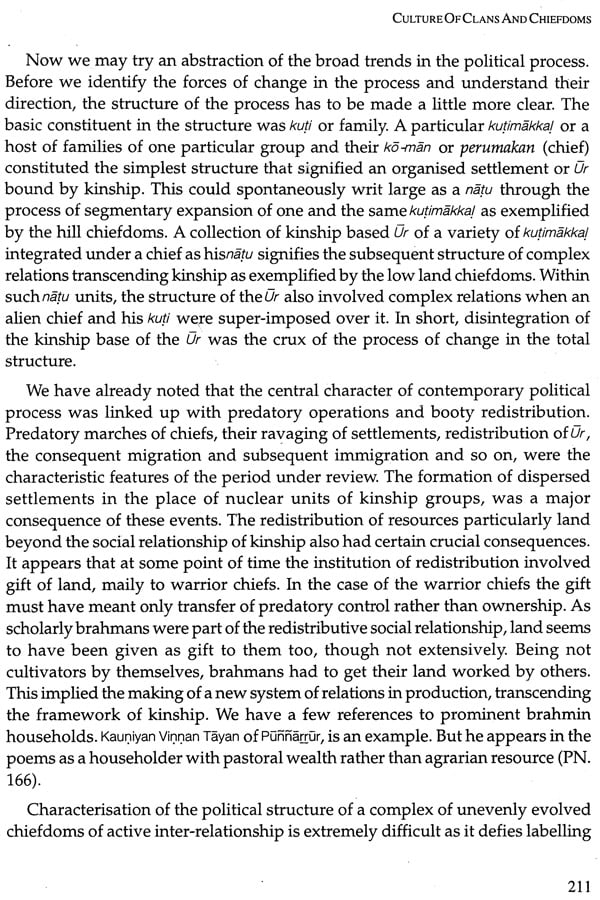
Cultural History of Kerala (Volume 1)
Book Specification
| Item Code: | NAZ303 |
| Author: | Rajan Gurukkal and M.R. Raghava Varier |
| Publisher: | Department of Cultural Publications, Kerala |
| Language: | English |
| Edition: | 1999 |
| ISBN: | 8186365826 |
| Pages: | 305 (25 B/W Illustrations) |
| Cover: | HARDCOVER |
| Other Details | 9.50 X 7.50 inch |
| Weight | 860 gm |
Book Description
The volume is the result of a collective effort by a host of specialists to do a regional cultural history. It is done on the basis of a fresh evaluation of sources and by drawing the benefits of conceptual insights and methodological sophistication embodied in recent social scientific researches. The content of the volume is an outline of the cultural history of the land and people within the geographical limits of Kerala State. From Prehistoric Times of uncertain starting point, terminus ad quo till the spread of Wet-rice Agriculture, with c. 800 A.D as terminus ad quern. Thematically, the volume seeks to provide an outline of the antecedents of cultures that eventually led through the processes of syncretism, assimilation and acculturation, to the formation of the macro culture of the Malayalis. Negotiating with the problem of evidential scarcity, the volume has embodied an explanatory narrative on the material processes broadly of the cultural transition from the tribe to the caste. The material transformation manifested itself in the shift of landscape-base of contemporary economy. The shift symbolised a series of inter-related and culturally significant transformations. Firstly, the shift meant the shift of economic geography in the sense that it was the transformation of the millet-dominated economy into the paddy-dominated one. The transformation of kin-labour into non-kin labour, that of clans into castes, and that of simple clannish settlements into structured agrarian villages, made the shift fundamental. The birth of a new political structure that was also a major simultaneous process with the development and expansion of wet-rice agriculture marked the period as the period of the transformation of chiefdoms into monarchy. At the level of culture occurred the transformation of orality into literacy and heroism into the bhakti. Further the transformation involved the deliverance of the Malayalam language and the Kerala Culture from the Tamil and Tamilakam Culture.
ntil recently the subject matter of Cultural History used to be more or less the history of cultural achievements under kings. Interestingly, the King and his reign used to be conceived symbolic of ancient times. The discipline History thus looked like grandmothers' tales that invariably started with the days of a king of long, long ago. That is not the situation today. History is a discipline of specialised knowledge about the past. It is a social science. Just as other social sciences it is now concerned about the development of human affairs and social processes. Historical writing is no longer an activity of antiquarian interest, but on the contrary a serious exercise of search in the past for insights into the problems of the present. This is not to say that most of us have given up the old fashioned history completely and that the discipline is being taught everywhere in social scientific perspective. It is still there entrenching the discipline as a mere common sense description of past events in the chronological sequential order, enabling anyone to do story telling in the name of history. A forceful shift from this trivial way of handling the past began in Indian historiography during the fifties (D.D. Kosambi, 1958). It has not gained dominance as yet. In the case of the history of Kerala, though not in the form of a clearly defined perspective, the shift slowly began during the same period (Elamkulam, 1959). It advanced in the sixties and seventies (M.G.S. Narayanan, 1972). There have been concerted efforts to carry the shift further by a host of recent writers with strong empirical knowledge (K.Veluthat, 1978), critical outlook (P.K.Balakrishnan, 1983), holistic perception (K.N.Ganesh, 1990) and methodological rigour (M.R.R.Varier & R.Gurukkal, 1991). On the whole the mainstream is still revolving round the old pole, despite these stray attempts to pursue new perspectives. The volume is the result of a collective effort by a host of specialists to do a regional cultural history. It is done on the basis of a fresh evaluation of sources and by drawing the benefits of conceptual insights and methodological sophistication embodied in recent social scientific researches. The content of the volume is an outline of the cultural history of the land and people within the geographical limits of Kerala State from Prehistoric Times of uncertain starting point, terminus ad quo till the spread of Wet-rice Agriculture, with c. 800 A.D as terminus ad quem. Thematically, the volume seeks to provide an outline of the antecedents of cultures that eventually led through the processes of syncretism, assimilation and acculturation, to the formation of the macro culture of the Malayalis. Negotiating with the problem of evidential scarcity, the volume has embodied an explanatory narrative on the material processes broadly of the cultural transition from the tribe to the caste or the peasant. Normally a volume based on collaborative efforts would take the form of an anthology. But the present volume is an exception to that, for it has been reconstructed into a book by piecing together the contributions of specialists in a holistic perspective. There are interpolations as well as extrapolations. Works of different scholars in bits and pieces have gone into the making of each chapter. Even when the contribution of a specialist is put as a unified lot, it is welded at both ends with edited linkages making it an organic part of the book rather than an essay in an anthology. We have attempted here to conceive cultural history as a continuous process rather than as a series of facets that preclude the observation of interconnectedness and homologies.
**Sample Pages**
